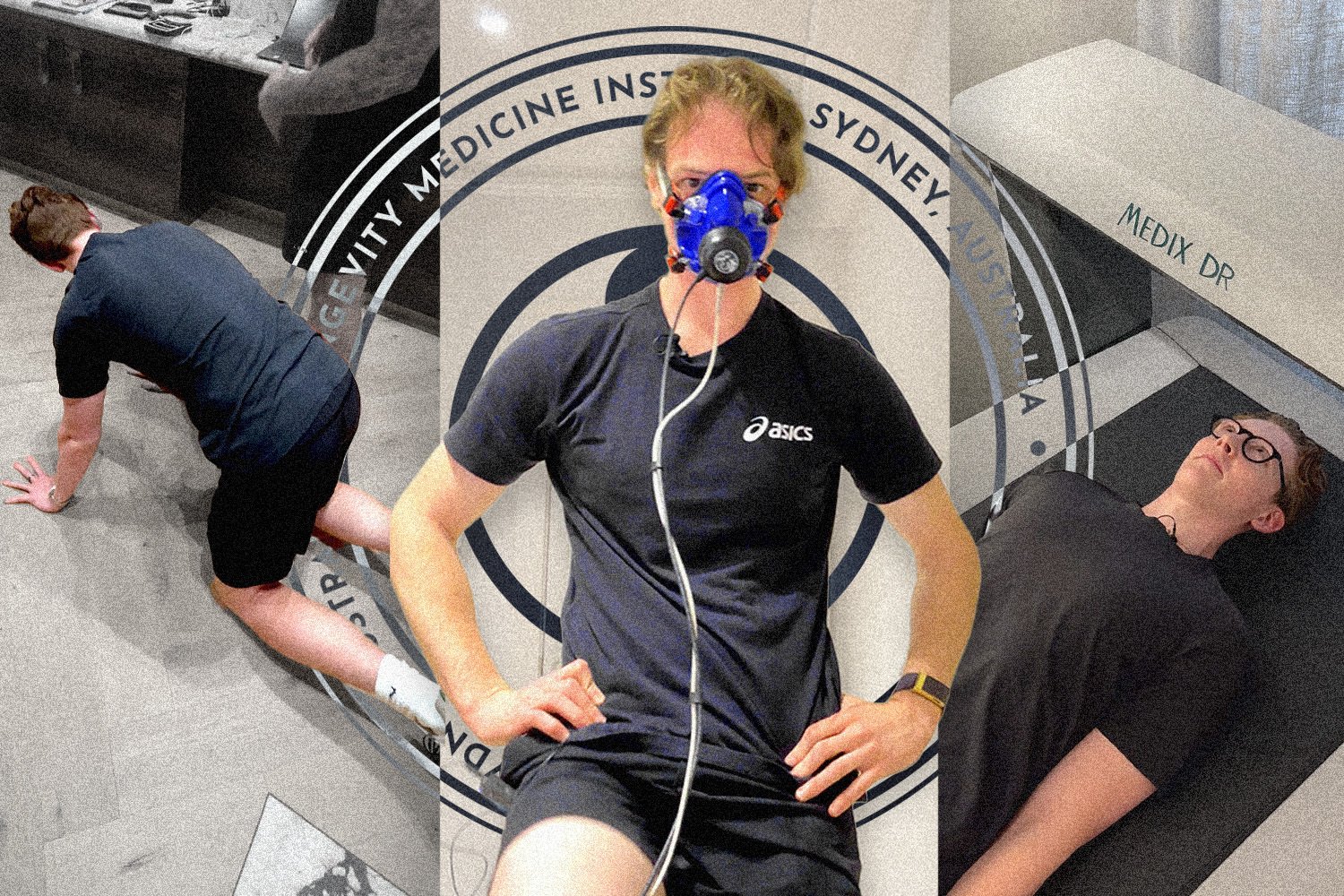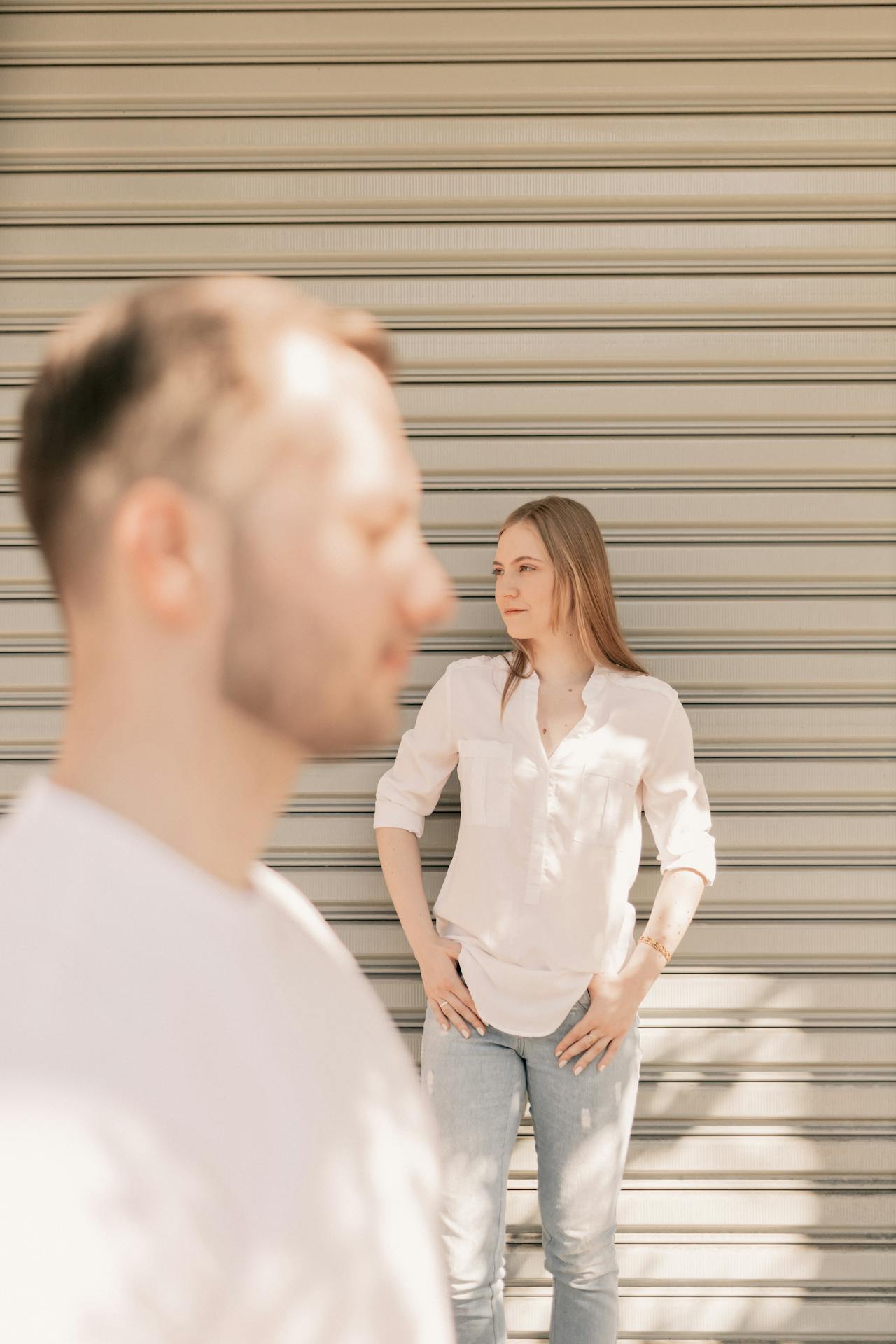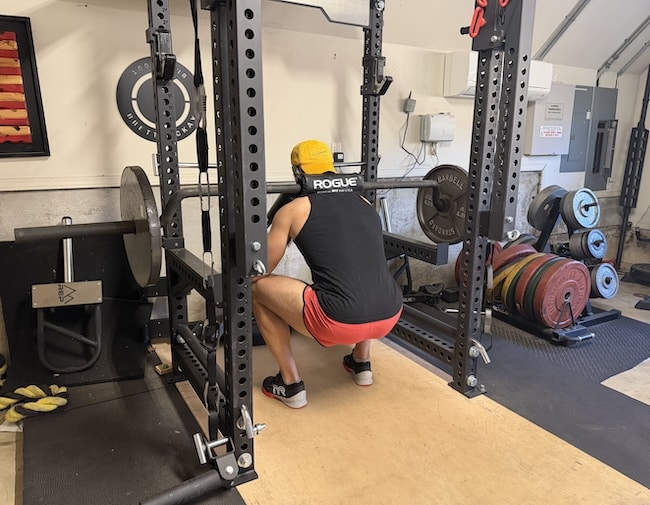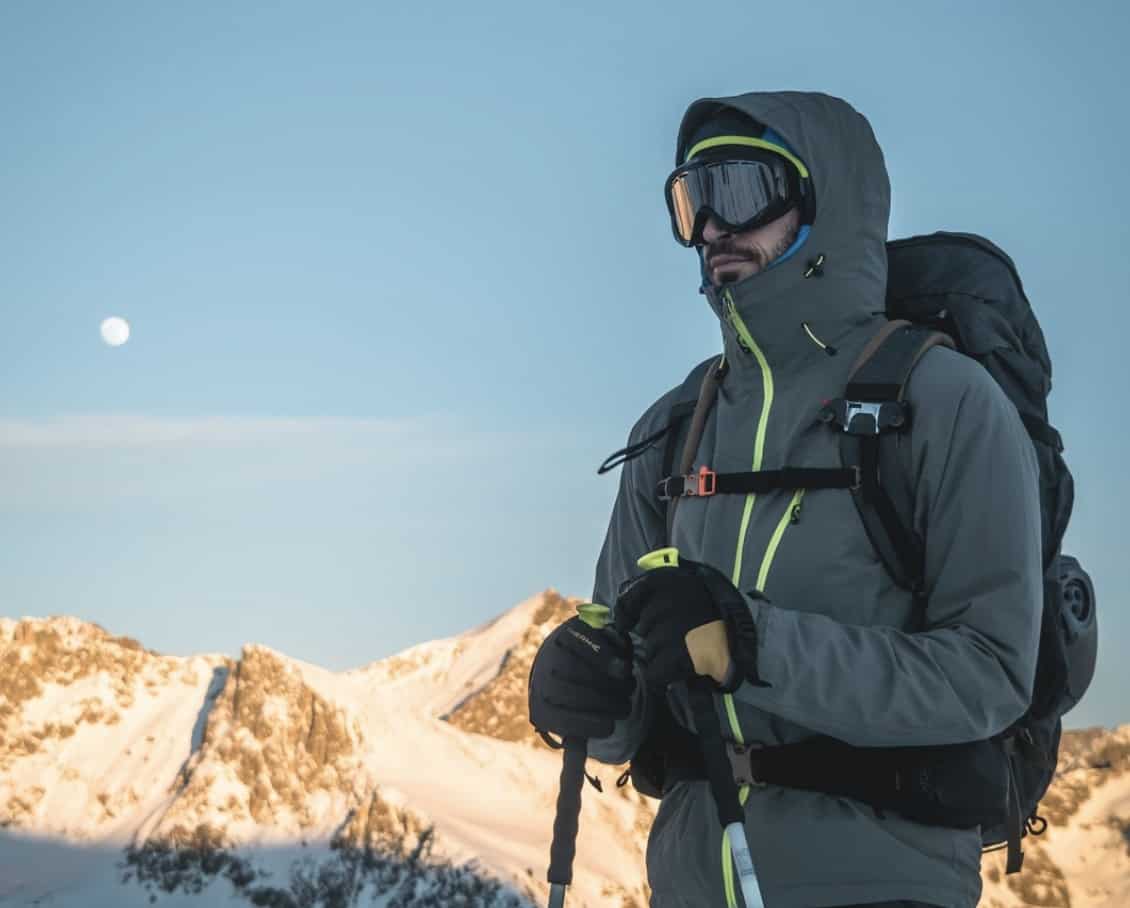These Affordable Amazon Snow Boots Are Suddenly Everywhere — Here’s Why Shoppers Keep Buying Them
Dec 9, 2025The Future Of Anti-Aging Healthcare Without A Billionaire’s Budget
- Feb 14, 2025
- 0 Comments
796

Longevity is no longer reserved for wealthy billionaires travelling to the far reaches of the unregulated globe to experiment with potentially life-threatening treatments in the name of immortality.
True, there are still those like billionaire biohacker Bryan Johnson who believe that humanity shouldn’t accept the banal inevitability of death, investing his vast fortunes and putting his own body on the line in the hope of extending life beyond its natural boundaries. Their high-profile endeavours, flush with media hype and timely Netflix documentaries, have catapulted the concept of longevity into the mainstream spotlight.
Yet an emerging new wave of more accessible options suggests that the quest for a longer, healthier life needn’t be the exclusive domain of tech moguls and trust-fund tycoons. Clinics such as the Longevity Medicine Insitute in Sydney’s Double Bay have introduced more cost-effective lifestyle interventions and affordable therapies that can help treat everyday people with everyday concerns.
Dr Adam Brown and the Longevity team are showing that preventive medicine, personalised diets, and integrative care can be both powerful and attainable for individuals looking to take care of their health, proving that you don’t need a billionaire’s budget to pursue a longer, healthier future. Dr Adam gives billionaires like Johnson pretty short shrift…
“There’s a lot of cowboys out there who offer all these ‘therapies’ with little evidence behind them, I think there’s a small but growing number of longevity clinicians who stick to evidence-based therapies, and that’s what we try and incorporate into this clinic.”
Dr Adam Brown
Here’s a quick run-through of our day with the Longevity Medicine Insitute.
First, Fin Takes to the DEXA Scan
Our first port of call for the day was a DEXA scan, which is able to provide comprehensive data on body composition and bone density by passing a low-level X-ray through the body. On first encounter, it’s an intimidating machine: a slate-grey bed with no discernible features save for a PC plugged into one end and an arm that hangs ominously over the bed itself. On lying down, you keep your arms by your sides and your legs close together.
Once in position, the aforementioned arm, hovering over your head, begins its six-minute journey down your body from head to toe. You need to stay as still as reasonably possible during the scan, but not statuesque; less intense than an MRI but about as good as your average game of sleeping lions.
After it’s reached your toes, the scanner whizzes back up past your head and the process is complete. The results are instantaneous. On one side of the computer monitor a fascinating if largely unflattering image of your body appears and on the other a heap of data that explains what you’re looking at.
What separates this DEXA scan from the more run-of-the-mill body composition gear your PT may have put you on at the gym — save for the eye-watering price tag of this bit of kit — is the level of detail it gives. In particular, its ability to point out exactly where the different tissues in your body are located and how this distribution varies from point to point is enormously useful from a longevity point of view.
In my instance, this came with an official diagnosis of my “chicken arms”. That is, boasting a tall and slender frame, though my overall levels of lean muscle mass were in the words of Dr. Adam “looking pretty good”, too much of this muscle was distributed through my “trunk” — chest, back, shoulders, core, thighs — and not enough in my arms and lower legs.
“One of the questions we ask all our patients is about their ultimate goals: what do you want to be able to do in the last two decades of your life? Do you want to be able to lift your grandchildren up? Do you want to be able to pick up the shopping? Do you want to be able to get on a plane and put the luggage in an overhead compartment? It’s about giving people a good quality of life as they reach their later years.”
Dr Adam Brown
Why does this matter? Your arms offer far more than sex appeal. Where longevity is concerned, we need the strength in our limbs to be able to grab things, carry, things, hold onto things and — something I hadn’t even considered in the naivety of my relative youth — keep us from falling flat on our face as we get older. Note to self: ramp up those curls.
The scan also offers huge levels of insight into bone density, visceral fat (fat clinging on and around your vital organs), and metabolism. When it comes to putting together your tailor-made longevity plan — that LMI’s speciality — all of this data is gold dust.
Gut Microbiome Testing was the Day’s Most Important Treatment
Next up came our microbiome mapping, for which we had been asked to provide a *ahem* sample some weeks before going into the clinic. While the sampling process did not rank among the most edifying moments of my life, it wouldn’t be an overstatement to say that the results of this test could have saved, and at the very least will have substantially changed, my life.
DNA analysis has transformed the field of microbiology and gut health testing in recent decades, making medical professionals more keenly aware than ever before of the health benefits and disease risks brought about by the microorganisms that inhabit the gastrointestinal tract.
This test is designed to assess our entire microbiome, with particular attention to microbes that cause disease or disrupt normal microbial balance such as pathogenic bacteria, opportunistic pathogens, fungi, viruses, and parasites. LMI’s resident nutritionist, Georgia Betts, joined us to talk through our results.
The levels of hundreds of gut “markers” are plotted on brightly coloured graphs, each coloured bright green, through amber, to an ominous red. This traffic light system is self-explanatory; anything in the green is good, no further action to be taken, whereas anything in the red won’t be good for you, either right now or for your future longevity.
You’ll be pleased to hear, as was I, that the vast majority of my markers were in the green and my gut was looking pretty healthy overall… However, a couple were glaring red, and Georgia quickly made it clear that this was a less-than-ideal situation. Why?
In short: your gut microbiome is crucial for overall health, as it helps digest food, produce vitamins, and strengthen the immune system. It influences your mood, weight, and overall vitality. By modulating inflammation and metabolic pathways, the microbiome also helps slow aging processes.
A diverse microbial population, maintained through a balanced diet, probiotics, and healthy lifestyle choices supports longevity and mental health alike, due to the long-overlooked brain-gut connection.
I had three markers in the red, two of which caused Georgia, and subsequently me, some serious concern. I’ll spare you the in-depth scientific explanation of the pathogens in question — I would doubtlessly butcher it anyway — but their presence, or at least their stubborn incubation, was largely due to two things. First, an immune system weakness of which I wasn’t previously aware.
Second, and this should be a lesson to any newbie gymbros like myself, from focusing too intensely on the amount of protein in my diet at the expense of other macro- and micronutrients. While protein is immensely important to gut and overall health, you cannot let it become your nutritional centrepiece; when they say your diet needs to be varied and balanced, this isn’t just a psyop to make you buy more Aussie-grown vegetables.
Thankfully, armed with a treatment plan revolving around dietary adjustments aided by carefully prescribed supplements, I was assured that my microbiome could be significantly tightened up in only a few dedicated weeks. Should I wish to go “all-in”, Georgia and the team at Longevity would be able to completely rid me of undesirable gastrointestinal pathogens over the course of a few months.
Had this gone unnoticed and untreated, the pathogens could have developed into any number of serious (some very serious) medical conditions. I owe Longevity a great deal for helping me catch this early on.
Ben then Broke a Sweat Trying to Match an Elite VO2 Max Score
Naturally, I didn’t walk into the nutritionist’s room with the natural aplomb as the physio room. Ever since we booked into the Longevity clinic, I’ve been most excited about the fitness testing – especially the VO2 max assessment. Like many guys our age, we both fancy ourselves as gym buffs and were eager to get a medical stamp of approval on our physical prowess.
“One type of patient we get is the very healthy patient who wants confirmation of their health status,” says Dr. Adam Brown. “Individuals who are very much into their data; who want boxes ticked for every aspect of their health, and we can offer them that.”
From a technical standpoint, VO2 max measures how much oxygen your body can use when you’re giving absolutely everything during any exercise. It’s a simple equation to work out: the higher the number, the better your cardiovascular endurance and overall fitness. My time to shine, I thought.
It’s a key marker that many longevity experts use because a strong VO2 max correlates with better heart health, improved metabolic function, and reduced risk of age-related diseases. In other words, if your lungs and circulatory system are firing on all cylinders, you’re more likely to maintain stamina and energy as you grow older, which translates into tangible health benefits – like climbing stairs without getting winded, staying energetic throughout the day, and keeping up with the grandkids when we reach our twilight years.
If the previous two sessions were anything to go by, the opportunity to leave Fin in my proverbial dust was too good to turn down. Dr. Adam hooked me up to the machine — leaving me to look like I had narrowly missed out to Tom Hardy for a role in a Nolan superhero flick — and the race was on. For those of us pushing 30 years old, a VO2 max of around 40 ml/kg/min is average, 50 is above average, and 60 is elite.
Eight minutes into the bike test, my heart rate hit 160 bpm, and my WHOOP was probably wondering why I was going so hard at 10 a.m. on a Thursday. Eventually, I wrapped up with a final VO2 max score of 49 ml/kg/min – heart pounding and sweating far more than planned – just as Liam, Longevity’s resident PT, stepped in grinning, ready to take us on to the next stage of fitness tests.
Unsurprisingly, Fin Emerged as the Plank Authority During the Fitness Test
While Ben and I had, naturally, been quietly competitive about every aspect of this experience so far, this was when things became an out-and-out head-to-head. Liam Cornish, Longevity’s resident PT — who, for the record, is built like a proverbial brick sh*thouse — came into the clinic to put us through our paces with a carefully selected set of tests.
First up was the dreaded plank. The rules were simple: assume the position, palms down, and hold it for as long as you possibly can. If your stomach hits the floor or your glutes pop up more than an inch, it’s game over.
Planking is the one exercise that neatly correlates with core strength, muscular endurance, injury risk reduction, and overall fitness; all key elements shown to contribute to a longer, healthier life. People who maintain a higher level of this kind of functional fitness tend to have fewer chronic illnesses and better mobility, both crucial for healthy aging.
The times you want to be aiming for vary by your age, but with Ben and I both falling in the 25-30 bracket, it was 1m 30s to fall into the “average” bracket, 2 minutes for the “above average” bracket, and 2m 30s seconds for the “pretty darned good” bracket, give or take a few seconds either side. I’m proud to say that I took the biscuit for this one, coming in at 2m 47s, with Ben not far behind around the 2m 20s mark. When you read what follows, you’ll see why I held on to this early victory pretty tight.
Next: push-ups. Just like holding a plank, performing a higher number of push-ups correlates with stronger muscles, better cardiovascular health, and healthier body composition. All these components play an important role in preventing chronic disease, maintaining mobility, and improving quality of life. Although push-ups alone do not guarantee a longer life, your ability to knock out a solid set of push-ups provides a quick, reliable insight into your potential longevity.
Again, there were benchmarks we wanted to hit. From memory, 20-ish was “average”, 30-ish was “above average”, and 40-ish was “great” for our age group. Form was equally important too: chests had to brush the ground on the way down and arms hit full extension on the way up.
Again, if knees hit the deck or bums came up, Liam called time. I came in at 32 with flawless forms, arms at a tight 45 degrees from the body. Ben went for 41, but with his arms at an injury-inducing 90 degrees from the body, I’m calling this a moral draw, even if Ben certainly is not…
Finally, a grip strength test. This came as a surprise to me, but Liam’s explanation was straightforward and incisive: VO2 max is the single strongest indicator of longevity, but close behind is grip strength.
Why? Well, as I hinted at earlier: going far beyond your ability to doll out a good handshake, it reflects underlying muscle strength, neuromuscular efficiency, and broader cardiovascular and metabolic health. A near flawless predictor of functional independence — that is, the ability to pick up, grab, hold, and protect yourself from old-age tumbles — it’s an invaluable gauge for aging well.
The test was simple: take a dynamometer and squeeze it as hard as you possibly can. 5 seconds on your left hand, 5 seconds on the right, repeat three times. An average is taken of your readings and plotted against the benchmarks. For our age group, they were roughly: 30kgs for “average”, 40kgs for “above average”, and 50kg for “bloody good”.
There was no talking my way out of this one: Ben beasted me. I scraped in with a reading in the low 30s; average, but nothing more. Ben, on the other hand, came in with an average right up in the high 40s, breaking 50kgs on more than one reading. My chicken arms strike again, and I was prescribed curls, pull-ups, and farmer’s carries until the cows come home…
This Is Only The Beginning
A heads up to anyone thinking of heading down to Longevity: not only are heaps of additional fitness tests that Liam usually puts his clients through (so come prepared to get your sweat on in a big way), the assessments that we tried out are only a tiny fragment of the massive programme that Longevity offers its patients.
You can take a look at the full scope of their offer on their website but suffice to say that while we only had four hours to spare — and learned a lot about ourselves in that short but very sweet window — treatment programmes at Longevity run for months. Why? Because the team is committed to providing tailormade, data-driven plans rather than short-term fads and fixes.
These full-length journeys are not for the faint of heart — there’s nowhere to hide from Drr Adam’s one-of-a-kind data set, and you may not always like what you find — but the rewards are immense. Many products claim to be life-changing, but Longevity’s is one of the few that not only comes good on this claim to make your life better, but ti could make that better life a hell of a lot longer too.
Publisher: Source link







